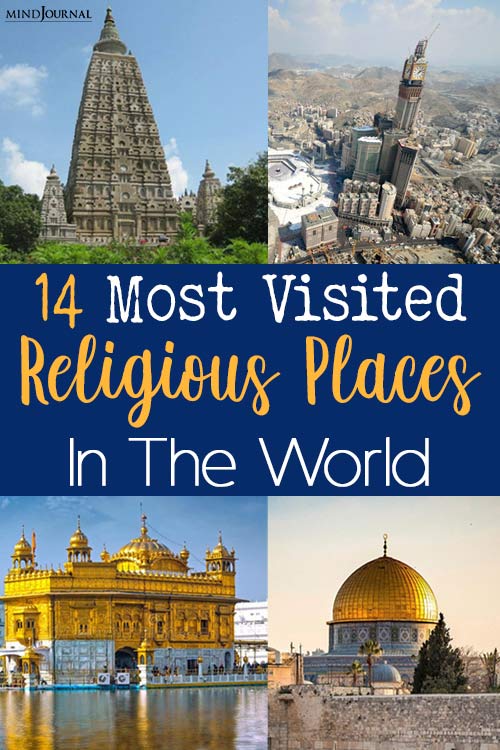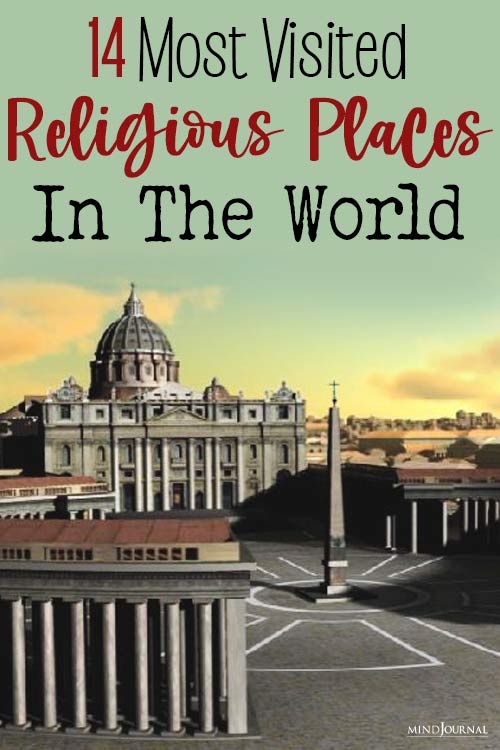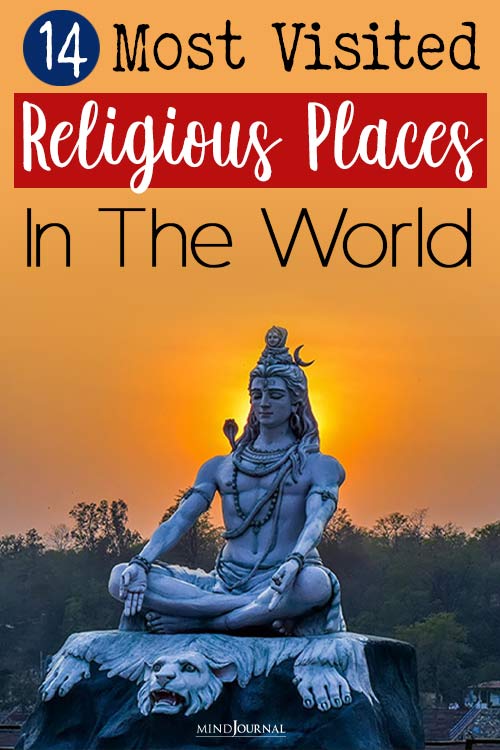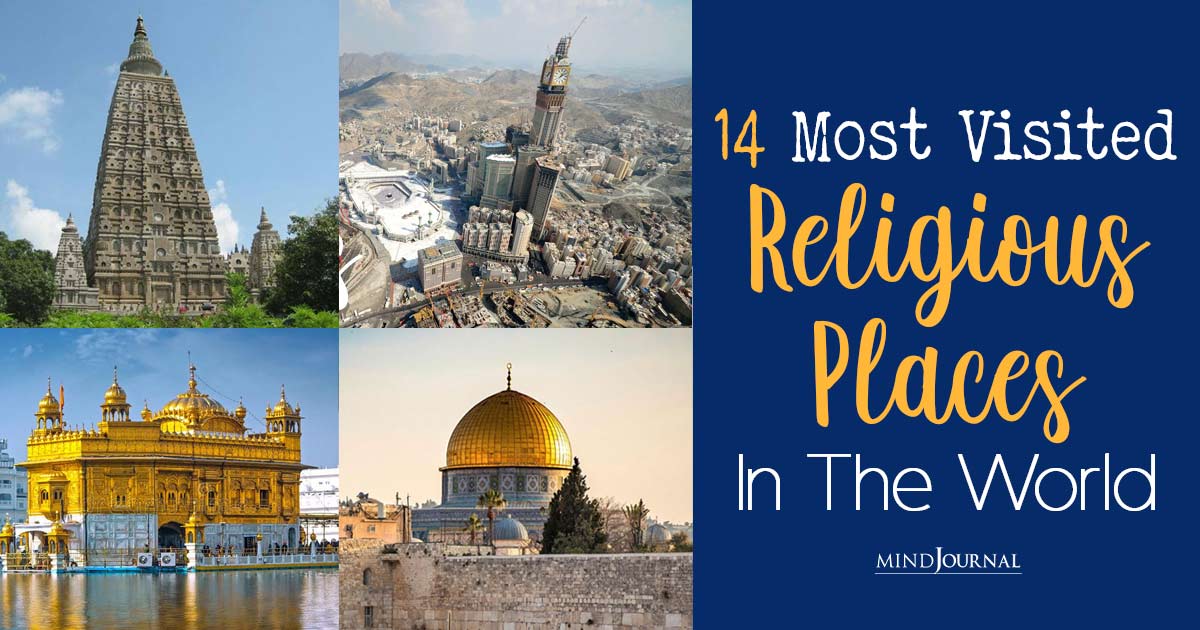Are you curious about the most visited religious places in the world and the spiritual significance they hold?
Throughout history, humans have been drawn to places that are considered sacred because of their spiritual significance. These places often have a deep-rooted connection to our beliefs, values, and traditions.
They are considered holy, and people visit them to connect with the divine, their faith, seek enlightenment, or simply to find peace and solace. Journey with us as we explore the transformative power of sacred places in the world and pilgrimage destinations.
What are sacred places and pilgrimage sites?
Sacred places in the world are locations that hold religious or spiritual significance. These places may be associated with a particular deity, saint, or religious figure, and are often revered by followers of a particular religion or tradition.

Pilgrimage destinations are places that people travel to for religious or spiritual reasons. Pilgrimage is a journey to sacred places that is undertaken for religious or spiritual reasons.
In many religions, certain places are considered to be more sacred than others, and they are often the focus of pilgrimages. These places are believed to be imbued with spiritual power, and visiting them can bring about spiritual transformation.
Related: Spiritual Wanderlust: The Top 56 Spiritual Places And Destinations To Explore Across The Globe
14 Most visited religious places in the world
Traveling to holy places has been a significant part of spiritual journeys for centuries. Millions of religious travelers from across the world visit sacred destinations every year to pay homage and seek blessings.
These most visited religious places in the world attract huge crowds not just for worship but also for their architectural splendor, historical importance, and spiritual magnetism.
Here are the 14 most visited holy and sacred sites across different faiths that draw huge numbers of pilgrims annually.
1. Mecca, Saudi Arabia
Mecca is one of the holiest place on earth and the holiest city in Islam, and it is the birthplace of the Prophet Muhammad. It is home to the Kaaba, a cube-shaped building that is the most sacred site in Islam.
Every year, millions of Muslims from around the world make the pilgrimage to Mecca, known as the Hajj. This is among the top 10 holy places in the world.
2. Vatican City, Rome
Vatican City is the smallest independent state in the world and is the headquarters of the Roman Catholic Church.
It is home to St. Peter’s Basilica, which is one of the largest churches in the world and is the burial place of St. Peter, one of the twelve apostles of Jesus. This is undoubtedly one of the most visited religious places in the world.
3. Jerusalem, Israel
Jerusalem is considered to be a holiest place on earth and a sacred city in Judaism, Christianity, and Islam. It is home to the Western Wall, which is the last remaining part of the Second Temple and is considered to be the holiest site in Judaism.
It is also the site of the Church of the Holy Sepulchre, which is believed to be the place where Jesus was crucified and buried. There is no doubt that Jerusalem is one of the top 10 holy places in the world.
4. Varanasi, India
Varanasi is one of the oldest cities in the world and is considered to be one of the holiest cities in Hinduism. It is situated on the banks of the Ganges River, and it is believed that bathing in the river can cleanse one’s sins.
5. Lourdes, France
Lourdes is a small town in southern France that is famous for its Marian apparitions. In 1858, a young girl named Bernadette Soubirous claimed to have seen the Virgin Mary in a grotto near the town.
Today, Lourdes is a popular pilgrimage site for Catholics, and many people come to the town seeking healing and spiritual renewal.
6. Golden Temple, Amritsar
The Golden Temple is one of the holiest place on earth and the most sacred site in Sikhism and is located in the city of Amritsar in northern India.
The temple is covered in gold and is surrounded by a holy pool, which is believed to have healing properties. It is surely one of the most visited religious places in the world.
7. Shikoku Pilgrimage, Japan
The Shikoku Pilgrimage is a 1,200-kilometer pilgrimage route that circles the island of Shikoku in Japan. The route includes 88 temples, and it is believed that visiting all of them can bring about spiritual transformation and enlightenment.
8. Santiago de Compostela, Spain
Santiago de Compostela is one of the top 10 holy places in the world and the final destination of the Camino de Santiago, a pilgrimage route that stretches across northern Spain.
The route is popular among Christians, and it is believed that walking the route can bring about spiritual renewal and growth.
9. Bodh Gaya, India
Bodh Gaya is among the holiest place on earth where the Buddha is said to have achieved enlightenment. It is located in the state of Bihar in India, and it is a popular pilgrimage site for Buddhists from around the world.
10. Uluru, Australia
Uluru, also known as Ayers Rock, is a sacred site for the Anangu people of central Australia. It is believed to have spiritual power, and visitors are asked to respect its cultural significance.
Many people come to Uluru to connect with the land and to learn about the Aboriginal culture and traditions.
11. Mount Kailash, Tibet
Mount Kailash is a sacred mountain in Tibet that is considered to be the center of the universe in Hinduism, Buddhism, and Jainism.
It is believed that circumambulating the mountain can bring about spiritual transformation and enlightenment. Believed to be the abode of the Hindu God Lord Shiva, Mount Kailash is one of the top 10 holy places in the world.
Related: The Summit Of Spirituality: The Spiritual Significance Of The Himalayas
12. Lumbini, Nepal
The birthplace of Gautama Buddha in Lumbini, Nepal is one of the holiest pilgrimage sites for Buddhists worldwide. Monasteries, temples and meditation centers from different Buddhist traditions can be found within the Lumbini sacred garden.
13. Knock, Ireland
Knock is a small village in Ireland that is a major pilgrimage site for Catholics. In 1879, 15 people claimed to have seen an apparition of the Virgin Mary, St. Joseph, and St. John the Evangelist at the local church.
Today, the village is home to the Shrine of Our Lady of Knock.
14. Fatima, Portugal
Fatima is a small town in Portugal that is a major pilgrimage site for Catholics. In 1917, three children claimed to have seen the Virgin Mary in the town.
Today, it is home to the Shrine of Our Lady of Fatima, which attracts millions of pilgrims every year.
Characteristics of sacred places
The most visited religious places in the world have certain characteristics that set them apart from other places. These characteristics of sacred places in the world vary depending on the culture and religion, but some common ones include:
1. Spirituality
Sacred places are often associated with a particular religion or spiritual tradition. They are believed to be imbued with spiritual power, and visiting them can bring about spiritual transformation.
This is one of the basic characteristics of sacred places and pilgrimage destinations.
2. Cultural value
Sacred places are often an important part of a community’s cultural heritage. They can represent important events or figures from the past, and they may be the focus of cultural rituals and celebrations.
3. Physical features
Sacred places and sacred sites often have unique physical features that set them apart from other places. They may be located in areas of great natural beauty, or they may have distinctive architecture or artwork.
4. Pilgrimage
Many sacred places in the world are the focus of pilgrimage, where people travel from far and wide to visit them. This can create a sense of community and shared experience among pilgrims.
5. Reverence and respect
Sacred sites are often treated with reverence and respect by those who visit them. This is among the many primary characteristics of sacred places and pilgrimage destinations.
Visitors may be required to observe certain rituals or traditions, or they may be asked to show respect by dressing appropriately or refraining from certain behaviors.
Related: 10 Most Spiritual Places On Earth With The Strongest Energy Field
Significance of sacred places

Sacred places, pilgrimage sites and the most visited religious places in the world are often associated with the divine, and they evoke a sense of wonder, awe, and reverence in people. Let us understand the importance of sacred places –
1. Spiritual significance
The spiritual significance of these places can be traced back to our earliest ancestors who believed that certain places were inhabited by deities, spirits, or ancestors. These beliefs were passed down from generation to generation, and over time, they became intertwined with our cultural and religious traditions.
For many people, visiting sacred sites can be a transformative experience. It can provide a sense of connection to something greater than ourselves and offer a glimpse into the mysteries of the universe.
Some people visit these places to seek healing, guidance, or to perform rituals that are important to their faith. This is one of the fundamental importance of sacred places.
2. Cultural and historical significance
Sacred places are not only important for their religious or spiritual significance but also for their cultural significance. They often represent a connection to our past, our ancestors, and our cultural heritage.
They are often considered to be cultural and historical treasures that represent the collective memory and identity of a community or a nation. Sacred places and pilgrimage sites are often associated with important events, figures, or movements that have shaped our history and culture.
These places can also serve as a way to promote peace, tolerance, and understanding among different cultures and religions. They can act as a bridge between different communities, bringing people together in a shared experience of reverence and respect.
3. Environmental significance
This is another importance of sacred places. Furthermore, sacred places often have a deep connection to the natural environment, and they can serve as a way to promote environmental awareness and conservation.
Many sacred places are located in areas of great natural beauty, and they are often protected by traditional beliefs and practices that promote sustainable use and management of natural resources.
4. Economic significance
In addition, sacred places can also provide economic benefits to local communities through tourism and pilgrimage. This can help to promote economic development and alleviate poverty in many parts of the world.
Importance of sacred places and pilgrimage sites are multifaceted that extends beyond their religious and spiritual significance. They represent a connection to our past, our culture, our natural environment, and our shared humanity.
Takeaway
Sacred places and pilgrimage have been a part of human history and culture for thousands of years. They offer us a way to connect with our spirituality, our beliefs, and our traditions. The most visited religious places in the world are a testament to the enduring power of these sacred sites, and they continue to inspire and transform people from all walks of life.

Whether you are a devout believer, a spiritual seeker, or simply someone who is curious about the world’s religions and cultures, visiting these sacred places can be a life-changing experience.
So, take the time to explore the world’s most visited religious places, and allow yourself to be transformed by their spiritual significance.
Related: What Is Spiritual Ecology? How Our Relationship With Nature Shapes Our Spiritual Beliefs












Leave a Reply